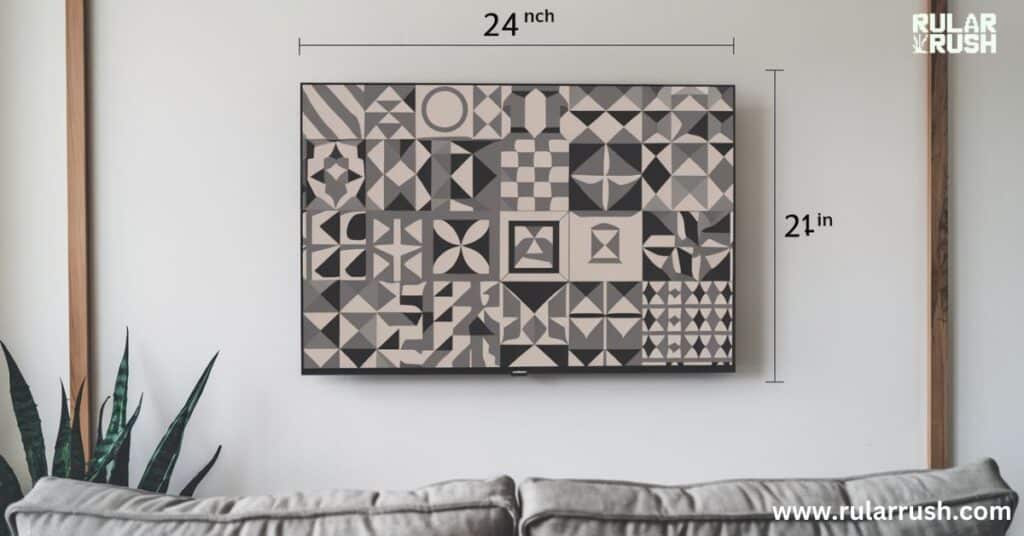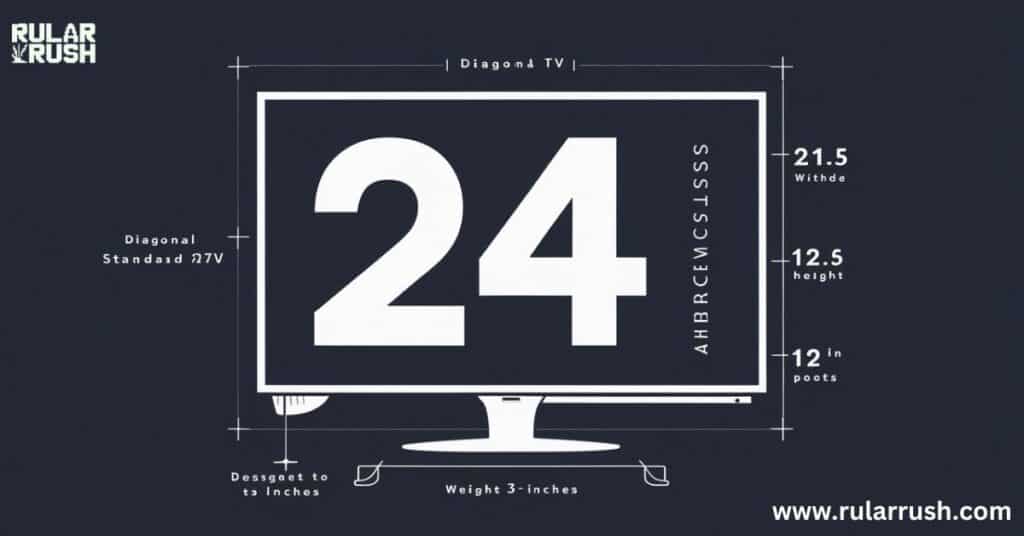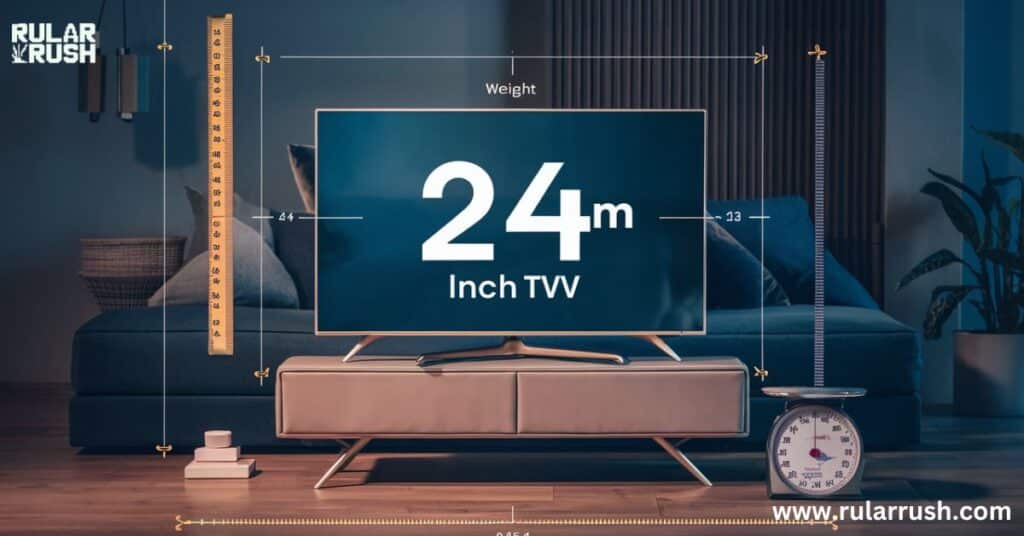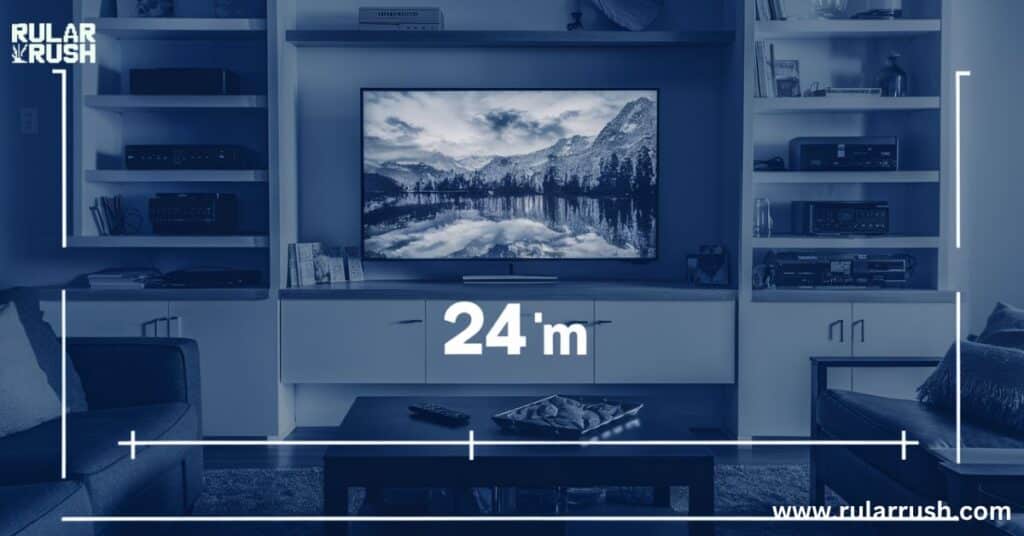24 inch TVs have become increasingly popular in recent years, offering a compact and versatile option for smaller living spaces. Understanding the standard 24 inch TV dimensions is crucial when selecting the right display. Typical measurements include a 24 inch screen size (diagonal), widths of 21.5 to 23 inches, heights of 12.5 to 14 inches, and depths (without a stand) of 3 to 6 inches. These compact TVs typically weigh 10 to 20 pounds, making them easy to wall-mount using standard VESA mounting sizes. The 16:9 aspect ratio has become the industry standard, providing a widescreen viewing experience well-suited for modern content. Whether in a bedroom, home office, or kitchen, 24 inch TVs excel in tight spaces while still delivering an immersive viewing experience.
Understanding the Dimensions of 24 Inch TVs
24 inch TVs have become increasingly popular in recent years, offering a compact and versatile option for smaller living spaces, bedrooms, offices, and even kitchens. Whether you’re looking to upgrade an older model or searching for the perfect TV for a specific room, understanding the standard dimensions of a 24 inch television is crucial.

In this comprehensive guide, we’ll dive deep into the typical measurements, aspect ratios, weight considerations, and mounting options for 24 inch TVs, providing you with the insights needed to select the right compact display for your space and needs.
Standard 24 Inch TV Dimensions

The overall dimensions of a 24 inch TV can vary slightly between different models and brands, but there are some general guidelines you can expect:
| Measurement | Typical Range |
|---|---|
| Screen Size (Diagonal) | 24 inches |
| Width | 21.5 to 23 inches |
| Height | 12.5 to 14 inches |
| Depth (without stand) | 3 to 6 inches |
| Weight | 10 to 20 pounds |
It’s important to note that these dimensions refer to the TV unit itself, excluding any stands or mounting hardware. The overall footprint of a 24 inch TV can be influenced by the specific design, with some models featuring a slightly wider or taller profile compared to others.
When purchasing a 24 inch TV, be sure to measure the available space in your room carefully to ensure the dimensions will fit your desired placement, whether that’s on a TV stand, dresser, or mounted on the wall.
The Role of Aspect Ratio

The aspect ratio of a TV refers to the proportional relationship between its width and height. Two of the most common aspect ratios found in 24 inch TVs are:
- 4:3: This classic aspect ratio was the standard for older, standard-definition televisions. A 24 inch TV with a 4:3 aspect ratio would typically measure around 19.2 inches wide and 14.4 inches tall.
- 16:9: This widescreen aspect ratio has become the industry standard for modern high-definition (HD) and ultra-high-definition (UHD) televisions. A 24 inch TV with a 16:9 aspect ratio would measure around 21 inches wide and 11.8 inches tall.
The 16:9 aspect ratio is now the most prevalent option for 24 inch TVs, as it provides a wider, more cinematic viewing experience that is well-suited for watching movies, TV shows, and playing video games.
Some 24 inch TV models may also offer an ultra-wide 21:9 aspect ratio, which provides an even more immersive, theater-like experience. However, these ultra-wide displays are less common in the 24 inch size range.
Weight and Mounting Considerations

One of the key advantages of a 24 inch TV is its relatively lightweight and compact size. Typical 24 inch models weigh between 10 and 20 pounds, making them easy to move and position within your desired space.
This lightweight construction also opens up more mounting options for 24 inch TVs. Many 24 inch models feature standard VESA mounting holes on the back, allowing you to securely wall-mount the TV using compatible brackets. Common VESA sizes for 24 inch TVs include 75 x 75 mm and 100 x 100 mm.
Wall-mounting a 24 inch TV can be a great space-saving solution, particularly in smaller rooms where a TV stand or cabinet may not be feasible. Just be sure to measure the available wall space and select a mount that can safely support the TV’s weight and dimensions.
Use Cases and Placement Considerations

The compact size and lightweight nature of 24 inch TVs make them a versatile option for a variety of use cases and placement scenarios, including:
- Bedrooms: The smaller footprint of a 24 inch TV allows it to fit seamlessly on dressers, nightstands, or even mounted on the wall, making it a popular choice for secondary TVs in bedrooms.
- Home Offices: 24 inch TVs can serve as a compact, secondary display for home offices and workspaces, providing a larger screen for productivity, video conferencing, or entertainment during breaks.
- Kitchens: The 24 inch size is well-suited for placement on kitchen countertops, islands, or mounted underneath cabinets, allowing you to watch shows or follow recipes while cooking.
- Dorms and Small Spaces: Students and those living in tight quarters, such as apartments or RVs, often opt for 2 24 inch TVs due to their space-saving dimensions and versatile placement options.
When selecting a 24-inch TV for your specific needs, be sure to measure the available space carefully and consider the TV’s depth, as this can impact placement on shelves, cabinets, or countertops. Additionally, ensure that any wall-mounting hardware you choose is compatible with the TV’s VESA dimensions and weight capacity.
Comparing 24 Inch TVs to Other Sizes

While 24 inch TVs offer a compact and versatile option, it’s important to understand how they compare to other common TV sizes:
- 27-Inch TVs: Slightly larger than 24 inch models, 27-inch TVs provide a bit more screen real estate while still maintaining a relatively small footprint. The overall dimensions are typically around 24 inches wide, 14 inches tall, and 3-6 inches deep.
- 32-Inch TVs: Moving up in size, 32-inch TVs offer a more substantial viewing experience, with dimensions usually ranging from 28 to 30 inches wide, 16 to 18 inches tall, and 3 to 7 inches deep. This size is often considered the sweet spot for bedrooms and smaller living rooms.
- 40-Inch TVs: At 40 inches diagonally, these TVs provide a larger, more immersive display, with widths typically between 35 and 37 inches, heights of 20 to 21 inches, and depths of 3 to 8 inches. 40-inch TVs are a popular choice for medium-sized spaces, such as apartments or small-to-medium living rooms.
When choosing between 24 inch and other TV sizes, consider factors such as the available space in your room, your viewing distance, and the intended use case. 24 inch TVs excel in tight spaces and as secondary displays, while larger sizes offer a more cinematic experience for primary viewing areas.
Conclusion
24 inch TVs have carved out a valuable niche in the television market, offering a compact and versatile option for a variety of living spaces and use cases. By understanding the standard dimensions, aspect ratios, weight considerations, and mounting options for these smaller displays, you can confidently select the right 24 inch TV to fit your needs and space.
Whether you’re looking to upgrade a bedroom, outfit a home office, or find a secondary TV for your kitchen, the detailed insights provided in this guide will help you navigate the world of 24 inch TV dimensions and make an informed purchasing decision. Remember to measure your available space carefully and consider how the TV’s dimensions will integrate with your desired placement and setup.
With the right 24 inch TV, you can enjoy a high-quality viewing experience without sacrificing valuable square footage in your home.
Must Read : https://rularrush.com/46-inch-tv-dimensions/

Elizabeth is an experienced blogger at “Rular Rush,” specializing in delivering precise and insightful content on various measurement topics. With a passion for simplifying complex concepts, she brings clarity and depth to each post, making technical information easy to understand for readers worldwide.






